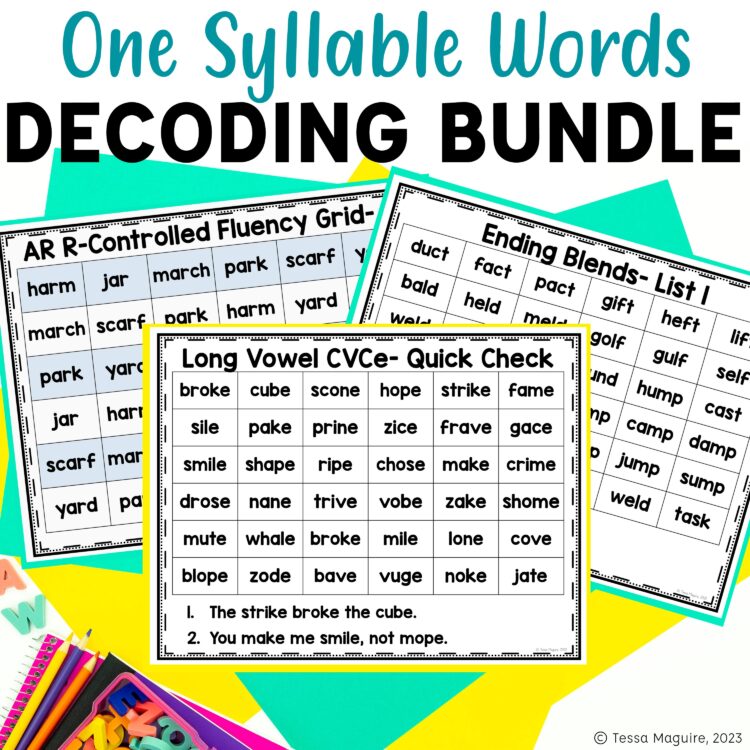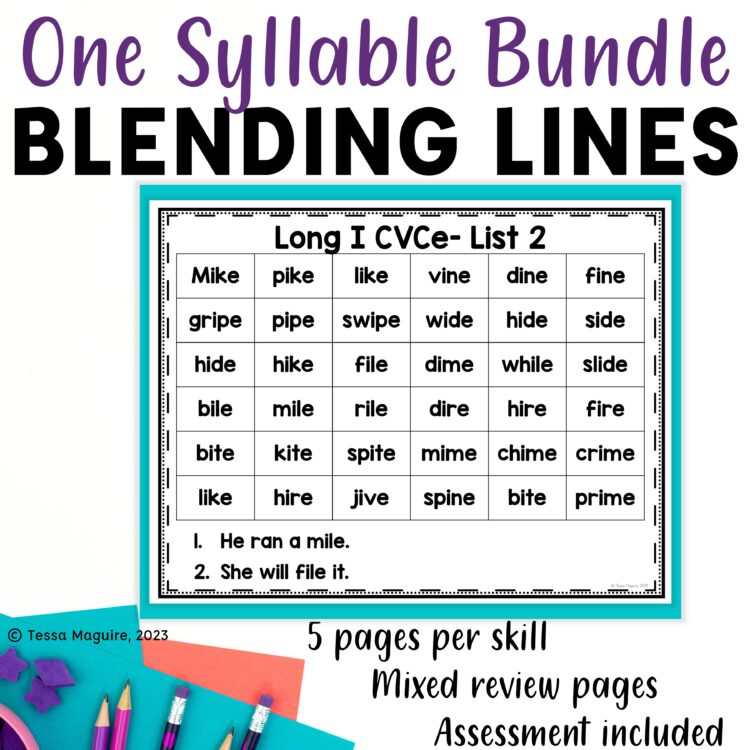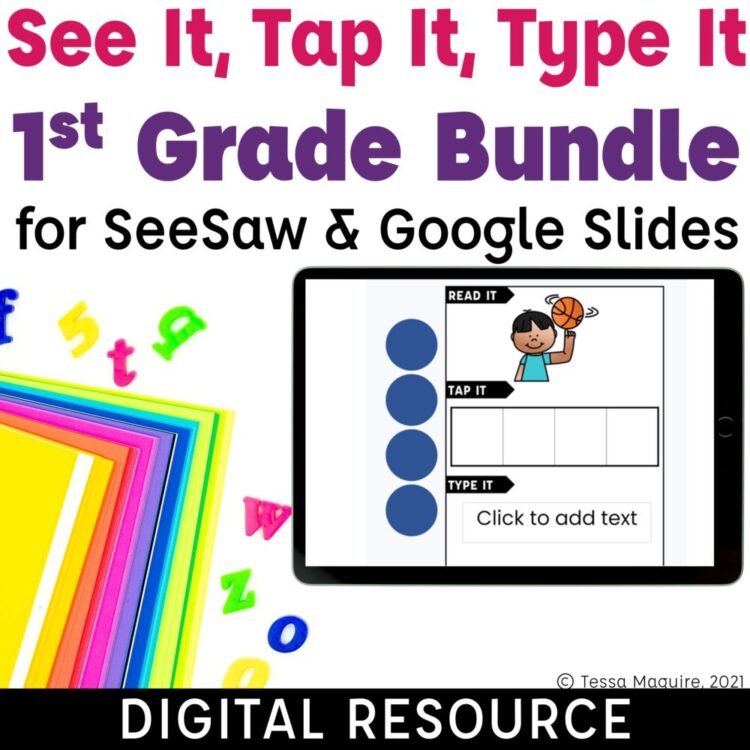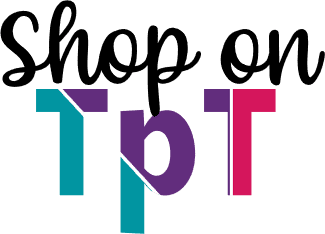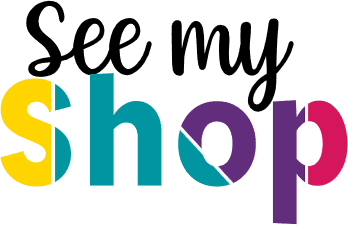© 2024 Tales from Outside the Classroom ● All Rights Reserved
How to Use Fluency Grids to Build Automaticity with Phonics Skills
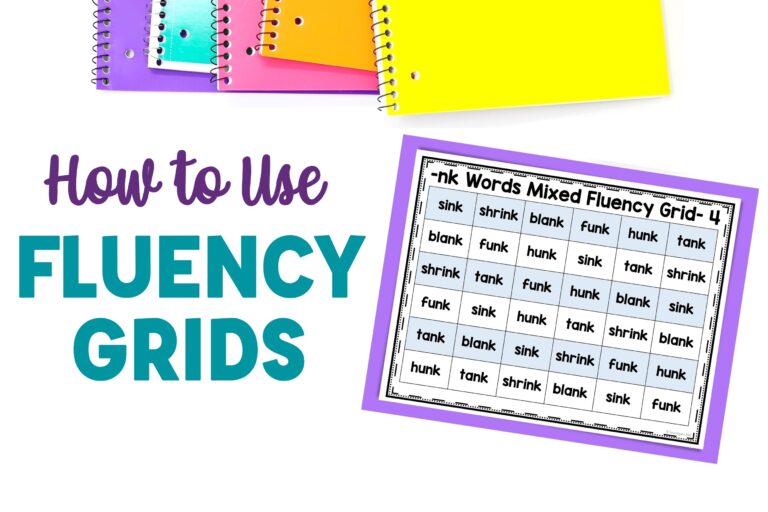
Fluency grids are a great phonics practice tool alongside your existing phonics program. They are quick, targeted and can be implemented in virtually any setting. This post walks through what they are, how to use them, and why they’re a valuable. Whether you’re a classroom teacher, or interventionist, fluency grids are a great addition to your phonics work.
What are fluency grids?
Fluency grids are just what they sound like: grids of words that build fluency. They are intentionally created to provide targeted practice with a particular phonetic skill. Fluency grids are a repeated reading activity. A small number of words (typically 5-7) is given in rows. The same words are then repeated in each row, but in a randomized order. As students read each line, they build fluency and automaticity with the included words.
How do you use fluency grids?
Fluency develops as a result of many opportunities to practice with a high degree of success. Therefore, fluency grids are best used with already practiced skills. Rather than using fluency grids with the current instructional focus, use them as continued review and practice. This gives students ongoing practice with the skills they are learning, to truly build fluency and mastery of each phonics skill. Of course, you can use them with your current instructional focus, but I’d wait until a day or two of instruction on the current skill. My blending lines are a great tool with your current focus!
Unlike other decoding activities, I prefer to use fluency grids within my small groups because of the small number of words. This helps me to really cue in to students’ practice and give corrective feedback as necessary. With that said, there are many ways to effectively use fluency grids with your students.
Small group warm up: My favorite way to incorporate fluency grids is as a warm up with my small groups. I use fluency grids to give continued practice on skills we’ve moved on from, to ensure students continue to get this much needed practice. I like to lay these out first while everyone is getting settled so students start their practice right away. Because the words are focused on skills we’ve already taught and practiced, I’m confident students can interact with the words with a high level of success, though I still listen in to be certain.
Small group practice: If using fluency grids with the current instructional skill I like to put them between our warm up and before we read connected texts or build words. We might pre-practice the 6 words together, then students begin reading them independently. During this time it’s very important to listen in as students read to ensure they’re practicing the words correctly. For many students, their low working memory inhibits them from remembering all 6 words from the pre-practice, so they need bits of support, at times.
Homework: Fluency grids are a great tool to send home for homework! Often, parents want to help support their blossoming readers, but aren’t sure how. Fluency grids are a quick (and should be painless) activity. A quick instructional page, or video tutorial, can help show parents how they are used, and how parents can effectively support students that have miscues.
Roll & Read: One non-traditional way I use fluency grids, at times, is as a Roll & Read activity. I like to do this as fun partner game within my small groups, when we need something out of our typical norm. Or, I sometimes include it for student partner practice when they’re not with me. I explain to students that they write a quick 1-6 along the top of the grid, roll a dice, and read the words from bottom to top. They can cross out each word as it’s read, color in the square, or they can use chips or other counters as they play. I typically have students color it in because they get enjoyment out of making it colorful. This is a great way to change up what we’re already using without much time and effort, so it’s a huge win for me!
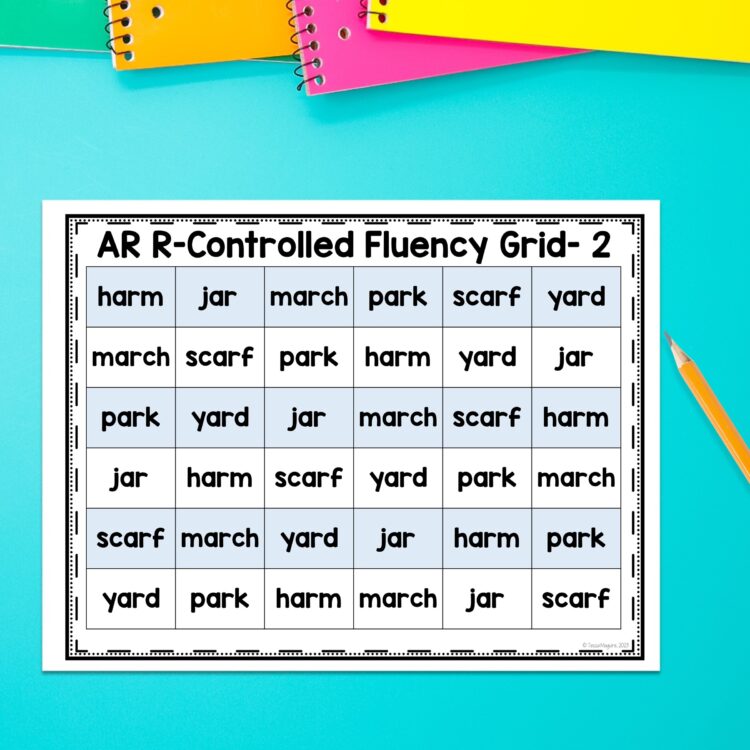
How Automatic Word Recognition is Developed
The mental process we use to store words in our long-term memory is called orthographic mapping. It’s what allows a reader to instantly identify any familiar word, rather than having to decode and recode it. Orthographic mapping happens when the reader connects the sounds, spelling, and meaning of a word. When a new word is encountered, is decoded while connecting sound-spelling relationships, along with the word’s meaning, orthographic mapping is built. After several interactions with the word, it can be stored in long-term memory for automatic retrieval later. Once a word is orthographically mapped, it is instantly recognized, thus, becoming a “sight word”. By adding more words to their sight word vocabulary, students improve their overall reading fluency and are able to access increasingly complex texts. It is important to note that orthographic mapping is not a skill or technique. Rather, specific work with phonics and phonemic awareness enables readers to orthographically map words.
Why use fluency grids?
Fluent readers can instantly and automatically recognize a large number of words (sight words). With a limited sight word vocabulary, or a limited number of words that have been orthographically mapped, reading is slow, laborious, and dysfluent. This leads to poor comprehension as cognitive resources are not able to focus on the meaning of the text.
Research shows that one of the most effective ways to improve oral reading fluency is repeated reading. Because fluency grids are focused on a small number of related words read repeatedly, they promote orthographic mapping of the words and letter-sound combinations. As students build automaticity through reading the same words, they are better able to add the word to their long-term memory. As students read the words they should have to segment much less frequently, making this an especially helpful activity for students with poor working memory. This makes fluency grids a particular beneficial activity for those students that seem to need additional practice than their peers. Because fluency is connected to comprehension, improved reading fluency is correlated with improved reading achievement.
It is important to note- fluency with word recognition does not replace oral reading fluency. We want students to build their automatic word recognition, but text-based fluency needs to be addressed more broadly.
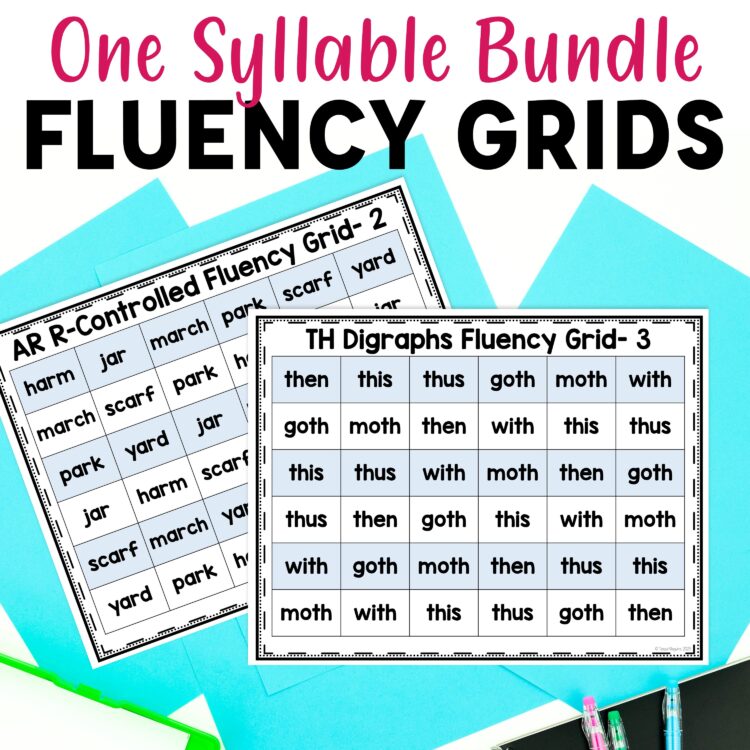
I currently offer fluency grids for many of the most common phonics skills in one-syllable words (and it’s growing!) I have them conveniently bundled into my One Syllable Words bundle.
What’s included?
Consonant Digraph Fluency Grids (with short vowels only)
Floss Rule Fluency Grids – Double Consonants
Consonant Blends Fluency Grids
NG & NK Fluency Grids – Consonant Digraphs or Glued Sounds
R-Controlled Vowels Fluency Grids
Use with my Blending Lines
I love to use both my fluency grids and blending lines within my phonics program. Fluency grids give fantastic, intentional practice with a small number of words. Because they’re so quick, and designed to focus on fluency rather than decoding, I use them to continue to have practice on skills we’ve moved away from. During my current instructional focus, however, I use my blending lines. The blending lines are created with an intentional focus with visually similar words. Each line is created in patterns to help cue students in to the minor differences in lookalike words while focusing on the specific phonics skill. Each blending line also includes two decodable sentences to give practice with connected texts.
Also included in my blending lines files are quick check assessments. Often, we don’t have ongoing assessments on phonics skills, and rely on our formal benchmark and progress monitoring assessments. These quick check assessments give you valuable information on student progress to help you make instructional decisions.
You can read more about my blending lines in my How to Use Blending Lines in the Classroom post.
Or, grab the One Syllable Words Decoding Bundle to get them both!
Tracking your Students’ Phonics Progress?
Looking to keep track of your students’ performance each week? Take a look at my free phonics data tracker. It’s currently set up with a phonics sequence based on an assessment but can easily be tweaked to track your students’ progress with the included quick check formative assessments. Take a closer look at my Free Phonics Data Tracker Spreadsheet or just fill out the form below to have it sent straight to you! I’ve also included a video tutorial that walks you through how to use it and update it for anything you need- including to track assessment data as you wrap up each skill!
SEND IT TO MY INBOX!
Submitting this form will send the tracking sheet and video tutorial straight to your inbox! I will also send you some information on early literacy as time goes on.
Next step: Confirm!
You should have received an email to confirm your settings. If you don’t see the email right away, search Tales from Outside the Classroom. Then be sure to mark me as a safe sender so you find every email right away!
Once you confirm, the email with your tracking sheet and video tutorial will be on its way!
Additional Reading
Phonics and Word Recognition Instruction from Reading Rockets
The Role of Orthographic Mapping in Learning to Read by Joan Sedita at Keys to Literacy
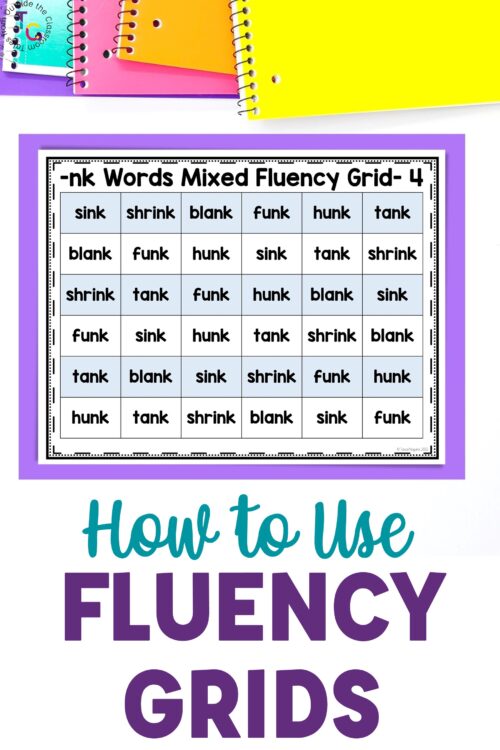
Newsletter Sign Up
Signup for my weekly-ish newsletter. I send out exclusive freebies, tips and strategies for your classroom, and more!
Please Read!
You have successfully joined our subscriber list. Please look in your e-mail and spam folder for Tales from Outside the Classroom. Often, the confirmation email gets overlooked and you're night signed up until you confirm!

Hi! I’m Tessa!
I’ve spent the last 15 years teaching in 1st, 2nd, and 3rd grades, and working beside elementary classrooms as an instructional coach and resource support. I’m passionate about math, literacy, and finding ways to make teachers’ days easier. I share from my experiences both in and out of the elementary classroom. Read more About Me.









